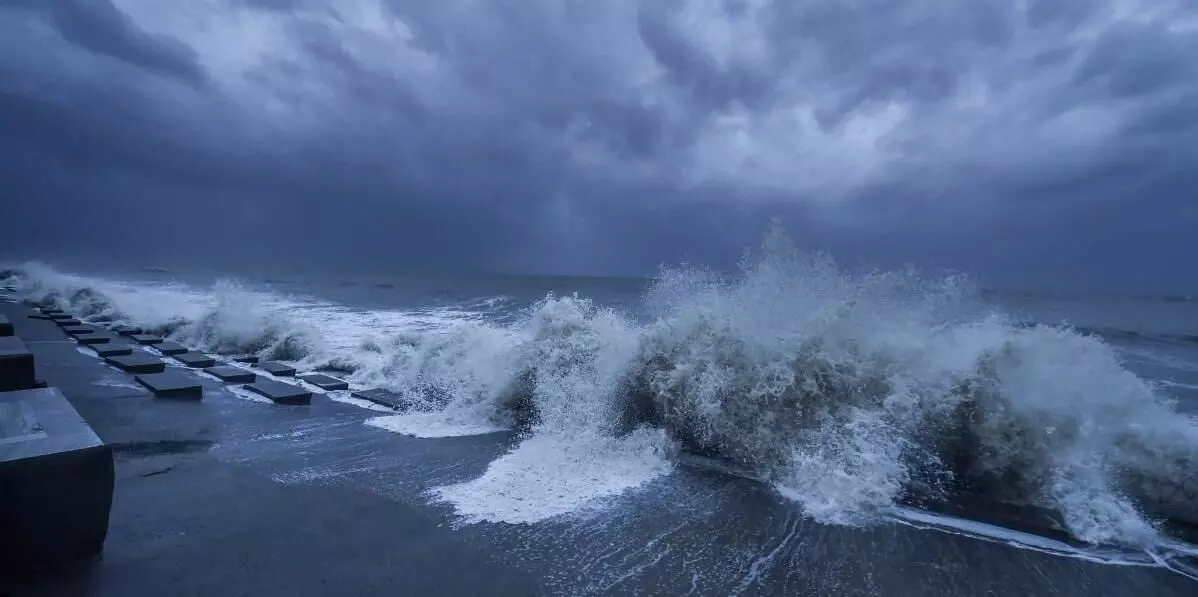
Rampant cyclonic formation linked to faster warming of Indian Ocean
text_fieldsRough sea in the Bay of Bengal ahead of Cyclone Yaas landfall at Digha in East Midnapore district on Tuesday
Rampant depression and cyclonic formation in the Indian Ocean is suggested to have linked to the warming of the ocean faster than the Atlantic or Pacific, leading to widespread destruction along the coast.
Indian coasts have seen devastating cyclonic attacks in recent pasts because of this natural phenomenon.
A report in the Guardian quoting the Indian Institute of Tropical Meteorology said that the current forecasting models lack the capability to predict rapid intensification in advance, worsening the calamities as most of the time the disaster management authorities and the public could not act timely.
Scientists at the Indian Institute of Tropical Meteorology has warned that the entire Indian Ocean is warming at a faster rate compared to the Atlantic or Pacific due to the alarming climate crisis.
According to a report published in The Guardian, India's cyclone season is being made more intense by the rapidly heating Indian Ocean. Within the Indian Ocean, the western parts of the Indian Ocean are warming much more.
Roxy Mathew Koll, a climate scientist at the Indian Institute of Tropical Meteorology said that the sea surface temperature rise is connecting well with the changes in the intensity and frequency of cyclones especially in the Arabian Sea and also the rapid intensification.
Roxy said that the climate projections also indicate that the Arabian Sea will continue warming under increased carbon emissions, resulting in more intense cyclones in the future. Ocean warming has made some new challenges also. Cyclones are now intensifying rapidly since warm ocean waters act as fuel for them.
Rising seawater levels will likely intensify the destructive impact of the cyclonic storms due to increased storm surges that inundate coastal areas during an ongoing storm, bringing in seawater that decreases soil fertility and corrodes buildings.
To add to the misery, the amount of rainfall carried by the storms might also increase by an average of 14 per cent due to the warming-fuelled increase in moisture in the atmosphere which can cause more intense floods.
The Indian subcontinent has been facing the brunt of costly and deadly tropical cyclones for decades. The Indian peninsula has faced 170 storms since 1970, which is the fourth highest after the United States (574), the Philippines (330) and China (305) in the same duration.
And between 1891 and 2017, India's coastline witnessed, on average, five cyclones a year. Four of them originated in the Bay of Bengal and one over the Arabian Sea.
Scientists say global heating is accelerating the rate of ocean warming, leading to an increased number of cyclones and rapid intensification of weak storms, with severe repercussions for the country.
Last week India was battered by Cyclone Tauktae, an unusually strong cyclone in the Arabian Sea, resulting in widespread disruption. Tauktae intensified from a very severe cyclonic storm to an extremely severe cyclonic storm within a few hours from 11.30 pm on May 16 to 5.30 am on May 17.
This week, another severe storm, Cyclone Yaas, formed in the Bay of Bengal, leading to more than a million people being evacuated into safe shelters.























